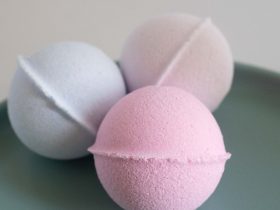Dermal fillers, a staple in the cosmetic enhancement industry, have expanded their reach beyond the traditional areas of the lips and cheeks to more innovative applications, such as in the forehead. Forehead fillers are an emerging trend in aesthetic treatments, offering a non-surgical solution to address various forehead concerns. This in-depth article explores the application of dermal fillers in the forehead, covering their benefits, procedure, types, potential risks, and aftercare.
Understanding Forehead Fillers
Forehead fillers involve the injection of gel-like substances, primarily hyaluronic acid (HA), into the forehead area. These fillers are designed to smooth out wrinkles, fine lines, and deep creases, as well as to add volume to sunken areas, resulting in a more youthful and rejuvenated appearance. dermal filler in forehead
Benefits of Forehead Fillers
- Reducing the Appearance of Wrinkles and Fine Lines: Forehead fillers can effectively minimize the visibility of wrinkles and fine lines, particularly those that occur due to aging and repetitive facial expressions.
- Volume Restoration: Aging can lead to volume loss in the forehead area. Fillers can restore this lost volume, giving the forehead a fuller, more youthful contour.
- Non-Surgical Alternative: For those hesitant about undergoing surgery, forehead fillers offer a non-invasive alternative to procedures like brow lifts.
- Immediate Results: The effects of forehead fillers are typically visible immediately following the procedure, allowing for quick aesthetic enhancement.
- Minimal Downtime: Unlike surgical interventions, dermal fillers in the forehead require minimal recovery time, making them a convenient option for individuals with busy lifestyles.
The Procedure
The procedure for injecting forehead fillers is relatively quick, often completed within 30 to 60 minutes. It typically begins with the application of a topical anesthetic to minimize discomfort. The filler is then carefully injected into specific areas of the forehead to achieve the desired outcome. The amount and type of filler used vary depending on the individual’s needs and the extent of correction required.
Types of Forehead Fillers
Hyaluronic acid-based fillers are the most commonly used for the forehead due to their safety profile and effectiveness. Other types, such as calcium hydroxylapatite and poly-L-lactic acid fillers, may also be used depending on the individual case and the practitioner’s preference.
Potential Risks and Side Effects
As with any cosmetic procedure, there are potential risks associated with forehead fillers. These can include redness, swelling, bruising at the injection site, and in rare cases, allergic reactions or infections. It’s also possible for fillers to migrate or create asymmetry if not injected correctly. Choosing a qualified and experienced practitioner is crucial to minimize these risks.
Aftercare and Maintenance
Post-treatment care for forehead fillers is relatively straightforward. Patients are usually advised to avoid strenuous exercise, exposure to extreme temperatures, and lying face down for a short period following the procedure. Mild swelling or bruising can be expected but typically subsides within a few days. The results of HA fillers in the forehead can last from 6 to 18 months, varying from person to person. Regular maintenance treatments are necessary to sustain the desired effect.
Conclusion
Forehead fillers represent a significant advancement in cosmetic treatments, offering a versatile and effective solution for enhancing the forehead’s appearance. They provide a non-surgical, relatively low-risk option with immediate results and minimal downtime. As with any cosmetic treatment, realistic expectations and professional guidance are essential. With the right approach, forehead fillers can significantly improve one’s appearance, boosting confidence and satisfaction with their overall look.
















Leave a Reply